Chapter: Civil : Railway Airport Harbour Engineering : Railway Engineering : Track Fittings and Fastenings
Rail to Rail Fastenings
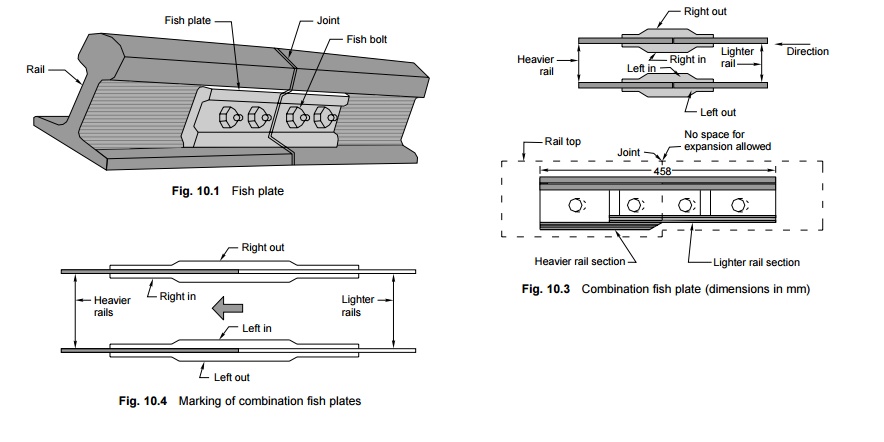
Introduction
The purpose of providing fittings
and fastenings in railway tracks is to hold the rails in their proper position
in order to ensure the smooth running of trains. These fittings and fastenings
are used for joining rails together as well as fixing them to the sleepers, and
they serve their purpose so well that the level, alignment, and gauge of the
railway track are maintained within permissible limits even during the passage
of trains. The important fittings and fastenings commonly used in India are
listed in Table 10.1.
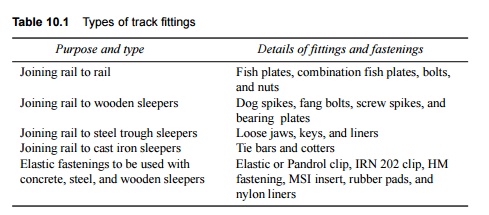
The number of various fittings
and fastenings required per sleeper for ordinary or conventional fastening as
well as elastic fastening for different types of sleepers are summarized in
Table 10.2.
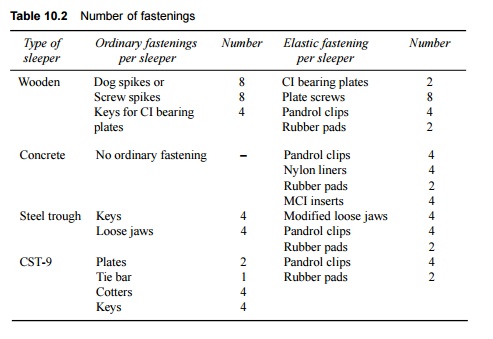
Rail-to-Rail Fastenings
Rail-to-rail fastenings involve
the use of fish plates and bolts for joining rails in series. Detailed
descriptions of these are given in the following sections.
1 Fish Plates
The name 'fish plate' derives
from the fish-shaped section of this fitting (Fig. 10.1). The function of a
fish plate is to hold two rails together in both the horizontal and vertical
planes. Fish plates are manufactured using a special type of steel (Indian
Railways specification T-1/57) with composition given below:
Carbon: 0.30-0.42% Manganese: not more than 0.6% Silicon: not
more than 0.15%
Sulphur
and phosphorous: not more than 0.06%
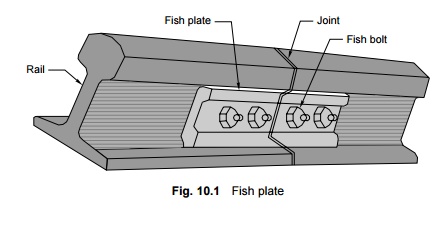
The steel
used for fish plates should have a minimum tensile strength of 5.58 to 6.51
t/cm2 with a minimum elongation of 20%. Fish plates are designed to
have roughly the same strength as the rail section, and as such the section
area of two fish plates connecting the rail ends is kept about the same as that
of the rail section. As fish plates do not go as deep as the rail, the strength
of a pair of fish plates is less than that of the rail section, about 55%, when
only vertical bending is taken into consideration. Fish plates are so designed
that the fishing angles at the top and bottom surface coincide with those of
the rail section so as to allow perfect contact with the rail as shown in Fig.
10.2. The details of standard fish plates used on Indian Railways for different
rail sections are given in Table 10.3.
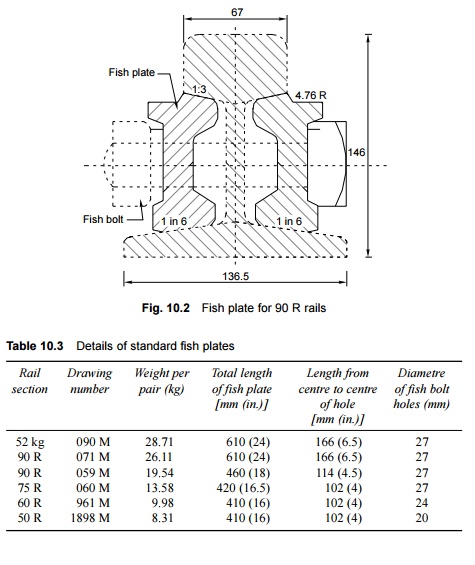
2 Combination Fish Plates
Combination
or junction fish plates (Fig. 10.3) are used to connect rails of two
differential sections. These are designed to cover the rail section at either
end adequately up to the point in the centre where the rail section changes.
Another design feature in these junction fish plates is the elimination of the
expansion gap in order to give them more strength. In spite of the varying
depths of the combination fish plates used in the fitting of 52 kg/90 R, 90
R/75 R, 75 R/60 R, etc. rail sections, the use of junction fish plates provides
a common top table for the two rail sections they join. A uniform system of
marking and exact nomenclature is adopted for each junction fish plate for
proper identification. Fish plates are marked right in, right out, left in, and
left out depending upon their position with respect to the direction from the
lighter rail to the heavier rail (as shown in Fig. 10.4). In the case of any
difficulty in obtaining a combination fish plate, the following alternate
arrangement can be made.
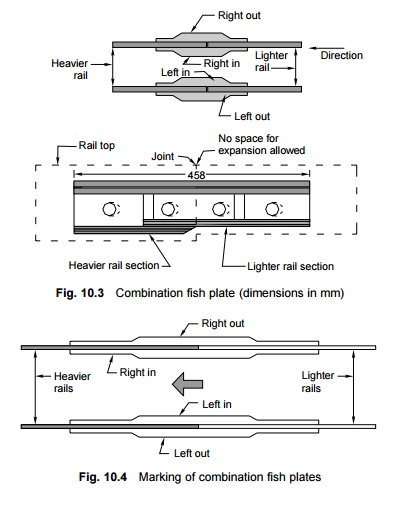
1. First the
composite rail, normally of a length not less than 4 m, is prepared by welding
together two rail pieces of different rail sections.
2. This
composite rail piece is then inserted at the joint in lieu of the combination
fish plate.
3. Normal fish plates are then used to join the composite rail piece to the rail lengths on either side, which have a rail section identical to that of the composite rail piece.
Related Topics